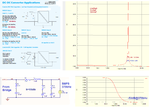Jester
Full Member level 6
Can anyone recommend a design tool for optimizing a conducted emissions filter?
This is low power for a 50V to 5V LM46000 simple switcher, < 2W
Thanks
This is low power for a 50V to 5V LM46000 simple switcher, < 2W
Thanks



